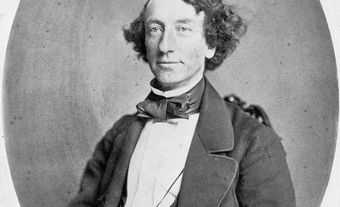
After the George-Étienne Cartier-John A. MacDonald ministry in the Province of Canada was forced to resign on 29 July 1858, a Reform ministry was formed under George Brown and A.A. Dorion. Under parliamentary rules, newly appointed ministers were obliged to resign their seats and face a by-election; but this rule did not apply to a minister who resigned one office and took another within a month. When the Reform ministry fell on August 4 and Governor General Sir Edmund Head called upon Cartier and Macdonald to form a second government, each minister took a new portfolio on August 6 and resumed his former office on August 7. The notorious "double shuffle" allowed the Macdonald-Cartier ministry to retain power without facing by-elections.

 Share on Facebook
Share on Facebook Share on X
Share on X Share by Email
Share by Email Share on Google Classroom
Share on Google Classroom


